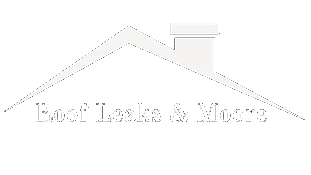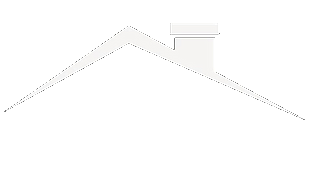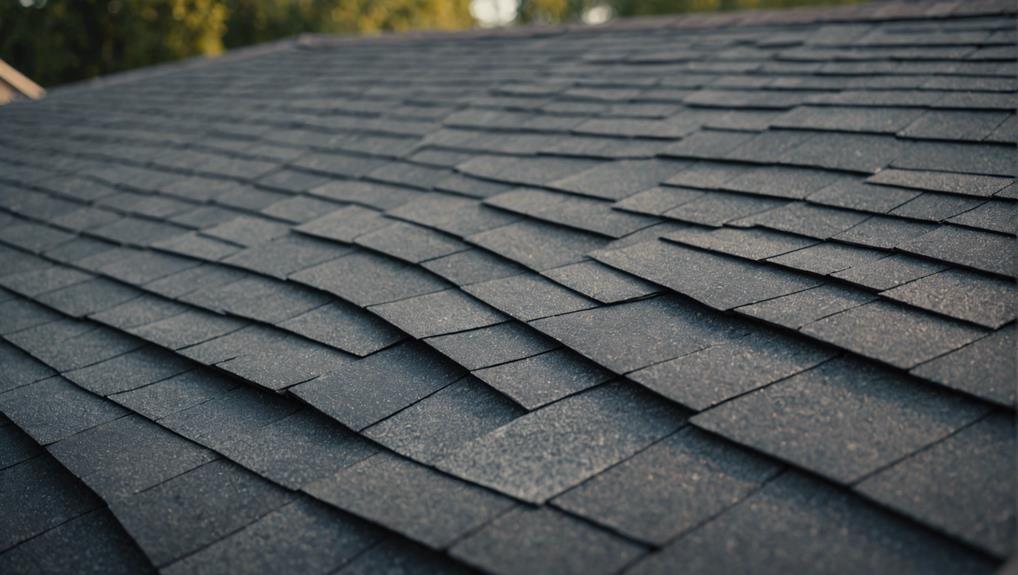When it comes to the lifespan of residential roofs, the question of how often they need replacement is one that requires thoughtful consideration. Factors such as the roofing material, environmental conditions, and maintenance routines play significant roles in determining the longevity of your roof. Understanding these elements is important in making informed decisions about the timing of roof replacements. So, before you make any decisions about your roof, it's vital to explore these key aspects further to guarantee the continued protection and safety of your home.
Key Takeaways
- Lifespan varies by material type and maintenance, ranging from 5-100+ years.
- Factors like climate and severe weather impact replacement frequency.
- Regular inspections and maintenance by professionals are crucial for longevity.
- Signs like damaged shingles, rusted valleys, and sagging indicate replacement needs.
- Timely maintenance increases durability, property value, and structural integrity.
Lifespan of Different Roofing Materials
Understanding the longevity of various roofing materials is essential in determining the replacement timeline for your home's roof.
When considering asphalt shingles, these commonly used roofing materials typically last between 5 to 10 years.
Composite shingle roofs, on the other hand, provide a longer lifespan, averaging around 15 years.
Wood shingle roofs, with proper maintenance, can endure for approximately 25 years.
If you're looking for even greater durability, standing seam metal roofs offer a lifespan that ranges from 20 to 50 years, making them a long-lasting option.
However, if longevity is your top priority, slate roofs are the way to go. These roofs are incredibly durable, with the potential to last for 100+ years when well-maintained.
Each material brings its own set of advantages and lifespan considerations, so selecting the right one for your home is essential in ensuring the longevity and protection of your roof.
Factors Influencing Roof Replacement Frequency
Factors that greatly impact the frequency of roof replacements include the type of roofing material, regional climate conditions, and regular maintenance practices.
Different types of roofing materials have varying lifespans; for instance, asphalt shingles typically last between 15-30 years, while metal roofs can endure for 40-70 years. Understanding the importance of the material on your roof is vital in predicting when a replacement might be needed.
Regional climate is another key factor influencing roof replacement frequency. Areas prone to severe weather conditions like hurricanes or heavy snowfall may experience more frequent roof damage, necessitating earlier replacements.
Additionally, regular maintenance by professional roofing experts can greatly extend the lifespan of a roof. Professional roofers can identify issues early, make timely repairs, and make sure the roof is well-maintained, ultimately delaying the need for a full replacement.
Importance of Regular Roof Inspections
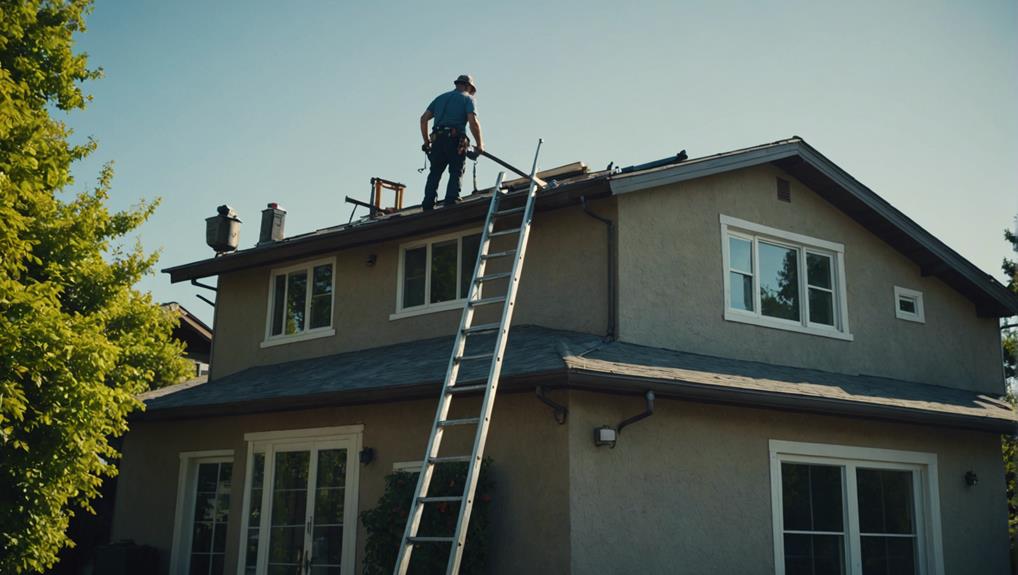
Regular roof inspections are crucial for maintaining the structural integrity and longevity of your roof. Conducting inspections at least once a year can help identify issues early and prevent costly damage. These inspections can detect problems like missing or damaged shingles, leaks, and structural issues. Professional inspections by a reputable roofing company are essential for addressing minor problems before they escalate. Timely inspections and maintenance can greatly extend the lifespan of your roof, potentially avoiding premature replacement. Scheduling a thorough inspection after severe weather events is crucial to promptly identify and repair any damage. Investing in regular roof inspections is a proactive approach that can save you from the inconvenience and expense of premature roof replacement.
Signs Indicating the Need for Replacement
When evaluating the condition of your residential roof, be vigilant for clear indicators such as missing or damaged shingles, curling or buckling shingles, and rusted roof valleys, as these may signal the need for replacement.
Missing or damaged roofing materials compromise the roof's ability to protect your home from the elements. Curling or buckling shingles are often a result of aging or poor installation, indicating the need for a closer inspection. Rusted roof valleys can lead to leaks, causing water damage to your home's interior.
Additionally, gaps in chimney flashing or visible daylight through roof boards are red flags that your roof may no longer be effectively sealing your home. Sagging areas, moss growth, or rotting boards suggest moisture-related issues that could necessitate a roof replacement.
As roofs age, these signs become more prominent, highlighting the importance of addressing them promptly to avoid a leaky roof and further damage.
Impact of Climate on Roof Longevity
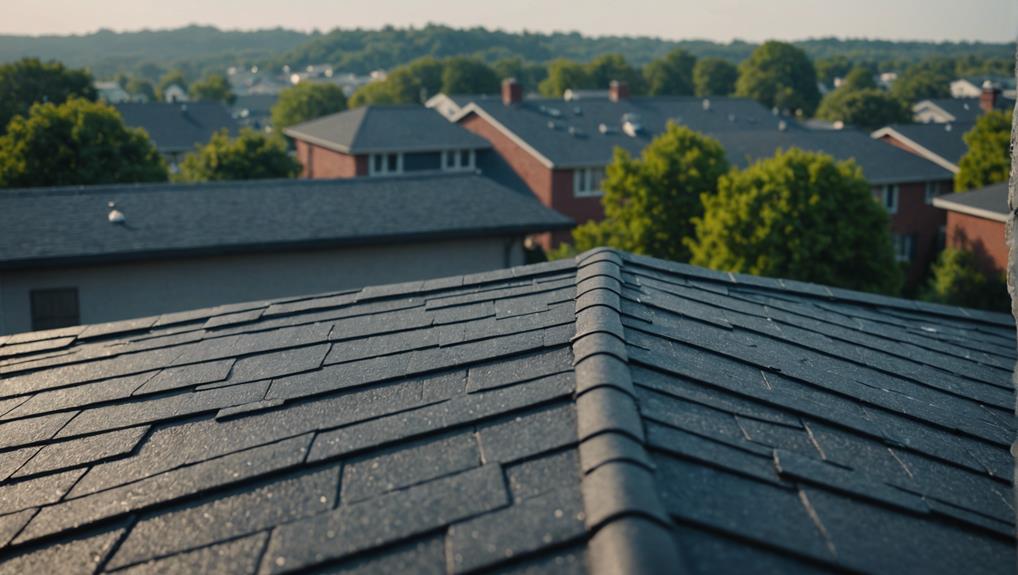
The climate conditions in which your residential roof is situated play a crucial role in determining its longevity and overall performance. For instance, in warm and humid regions like Texas, roofs are more prone to wear and tear due to the harsh weather conditions. Areas with hot summers may also experience accelerated roof deterioration compared to regions with milder winters. Additionally, severe weather events such as hurricanes, tornadoes, and hailstorms prevalent in Texas can greatly impact the lifespan of roofs.
To combat these challenges, selecting durable roofing materials like metal roofs or clay tiles can enhance a roof's ability to withstand extreme weather conditions. Proper maintenance and regular inspections are essential in climates prone to weather extremes to safeguard the longevity of residential roofs. By understanding the impact of climate on your roof, you can make informed decisions to protect and prolong its lifespan.
Cost Considerations for Roof Replacement
When considering the cost of roof replacement, you must assess budget-friendly material options, labor, and installation costs. Understanding these factors will help you plan and budget effectively for your roof replacement project.
Consulting with professionals in the roofing industry can provide valuable insights into cost-saving strategies and quality materials. Available financing and payment plans should also be considered when planning for your roof replacement.
Budget-Friendly Material Options
For budget-friendly material options in roof replacement, consider the cost-effective choices available, such as asphalt shingles, metal roofing, clay tiles, wood shake roofs, and composite shingles. Asphalt shingles are a popular and budget-friendly option, costing between $1.50 to $5.50 per square foot. Metal roofing, ranging from $5.00 to $12.00 per square foot, provides durability and longevity. Clay tiles, priced at $10.00 to $20.00 per square foot, offer a stylish alternative. Wood shake roofs, though aesthetically pleasing, can be more expensive, typically costing $6.00 to $15.00 per square foot. Composite shingles, at $3.50 to $7.00 per square foot, provide a durable and affordable solution.
| Material | Price Range ($ per sq. ft.) |
|---|---|
| Asphalt Shingles | $1.50 – $5.50 |
| Metal Roofing | $5.00 – $12.00 |
| Clay Tiles | $10.00 – $20.00 |
| Wood Shake Roofs | $6.00 – $15.00 |
| Composite Shingles | $3.50 – $7.00 |
Labor and Installation Costs
Consider budgeting for labor and installation costs as vital components of your roof replacement project. The average labor costs for roofing typically range between $3,000 to $6,000, depending on the project's size and complexity. Installation expenses for a new roof can vary from $5,000 to $10,000, particularly if premium materials or intricate designs are involved.
Various factors impact these costs, such as roof dimensions, pitch, accessibility, materials selected, and local labor rates. Additional expenses like permits, disposal fees, and equipment rentals can also affect the overall expenditure.
To guarantee a reasonable price for labor and installation, it's recommended to gather estimates from reputable roofing contractors and compare quotes diligently. Prioritize transparency and quality when evaluating the costs associated with your roofing project.
Financing and Payment Plans
To effectively manage the costs of your roof replacement project, exploring financing and payment plans provided by roofing companies is a strategic approach. Many roofing companies offer financing options tailored to assist homeowners in handling the expenses associated with roof replacement.
These payment plans can differ based on factors such as the scale of the project, the materials chosen, and the specific policies of the contractor. Some financing options may even include low or no-interest plans, making roof replacement more financially feasible for homeowners.
When obtaining quotes for roof replacement, it's advisable to inquire about the available financing and payment plans. Understanding these options can aid homeowners in budgeting effectively for the replacement of their residential roof.
Benefits of Timely Roof Maintenance
Timely roof maintenance greatly increases the lifespan of residential roofs by proactively addressing potential issues before they escalate. Regular inspections by a professional can help prevent minor roof needs from turning into major problems, saving you time and money in the long run. By catching issues early, you can avoid costly repairs and guarantee that your roof remains structurally sound, even during harsh weather conditions. Well-maintained roofs not only offer protection but also enhance the overall curb appeal and value of your property. Investing in proactive roof maintenance can provide peace of mind, knowing that you are safeguarding your home against unexpected roof failures. Remember, a little maintenance now can go a long way in extending the lifespan of your roof.
| Benefits of Timely Roof Maintenance |
|---|
| Increases roof lifespan |
| Prevents costly repairs |
| Enhances property value |
| Ensures structural integrity |
| Provides peace of mind |
Extending Roof Lifespan Through Proper Care
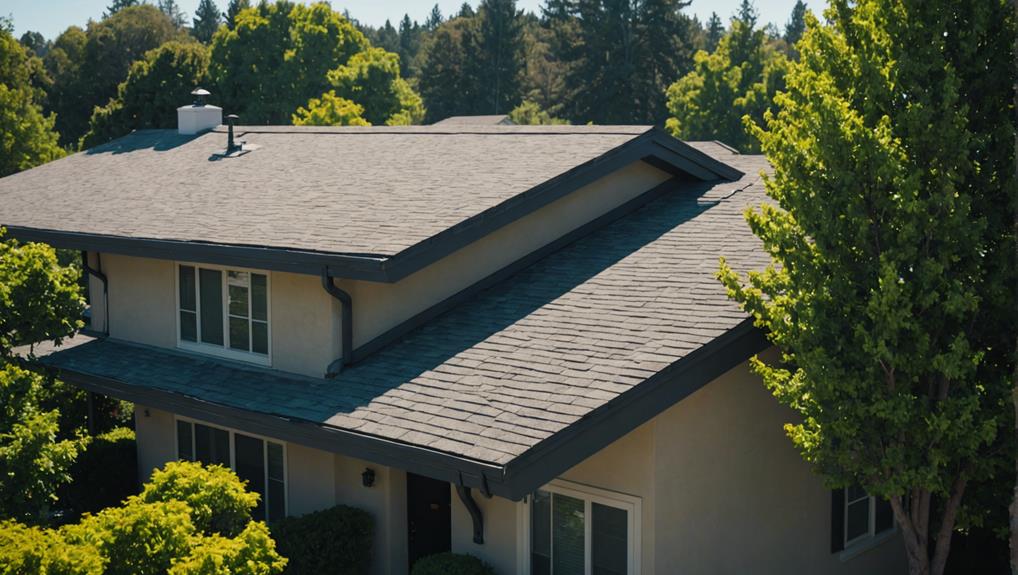
Extending the lifespan of your roof requires consistent and meticulous care to guarantee its longevity and peak performance. Your roof protects your home from the elements, making regular maintenance essential to guarantee its durability.
By investing in proper cleaning and inspection, you can address issues promptly, preventing damage and deterioration over time. A well-maintained roof is less likely to develop leaks and structural problems, saving you from costly repairs in the long run.
Neglecting maintenance can greatly shorten the lifespan of your roof, compromising its ability to shield your home effectively. By prioritizing regular care and addressing any concerns promptly, you can prolong your roof's lifespan, saving both time and money.
Frequently Asked Questions
How Often Should a Roof Be Changed?
You should change your roof when signs of damage like missing or curling shingles appear. Regular maintenance, cleaning, and inspections are crucial. Depending on materials and upkeep, some roofs can last up to 70 years.
What Is the Life Expectancy of a Residential Roof?
Your residential roof's lifespan varies based on the material chosen. Asphalt shingle roofs typically last 15-25 years, while metal roofs can endure up to 75 years. Wood shake and slate roofs offer longer durability. Regular maintenance is key.
Is a 20 Year Old Roof Too Old?
If you're wondering if a 20-year-old roof is too old, a thorough roof inspection by a professional can provide clarity. Regular roof maintenance and timely repairs can help extend its lifespan beyond 20 years.
How Do You Know It's Time to Replace Your Roof?
To know when to replace your roof, spot signs of extensive damage like missing shingles or drooping areas. Regular maintenance is crucial. Inspect for leaks or stains inside. A well-kept roof guarantees safety.
Conclusion
As an expert in roof maintenance, you know the importance of keeping a close eye on your roof's condition. By detecting signs of damage early and scheduling timely replacements, you can maximize the lifespan of your roof and avoid costly repairs down the line.
Remember, regular inspections and proper care are key to ensuring your roof withstands the test of time and keeps your home safe and secure. Stay vigilant and proactive to protect your investment.
